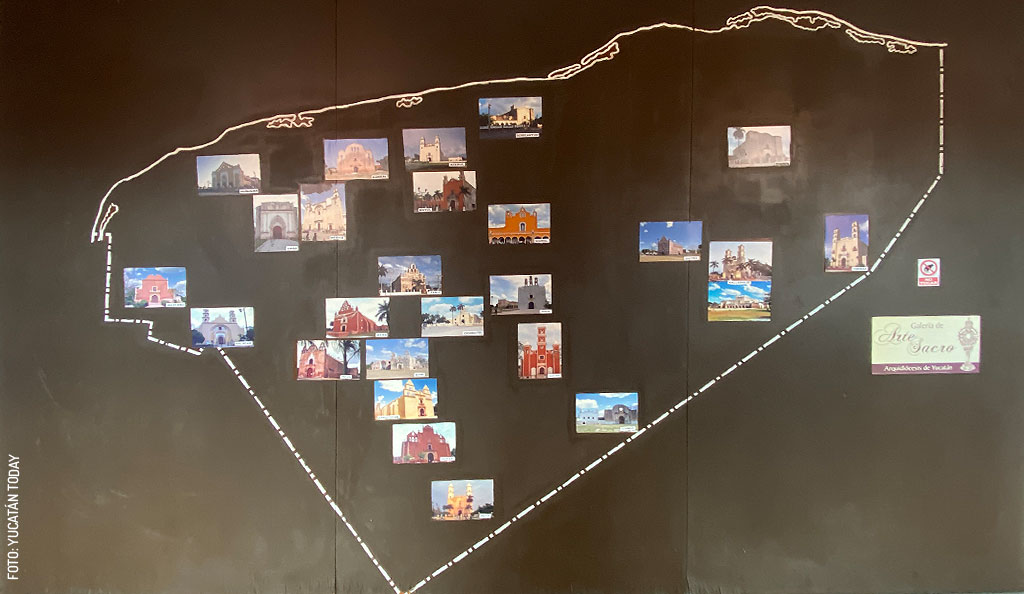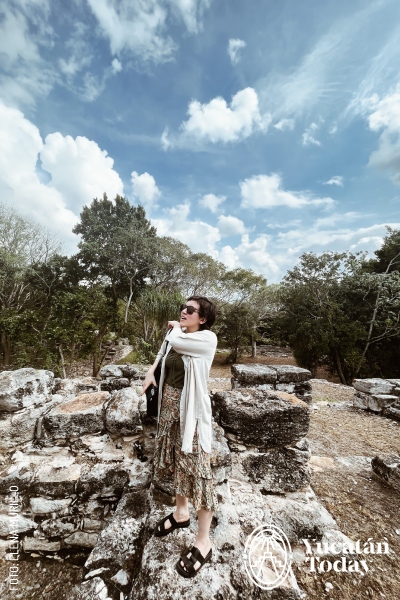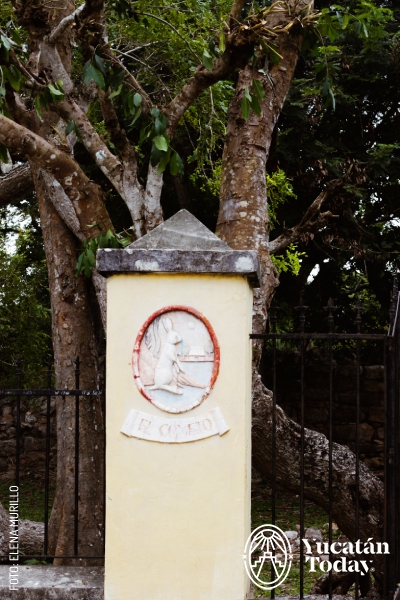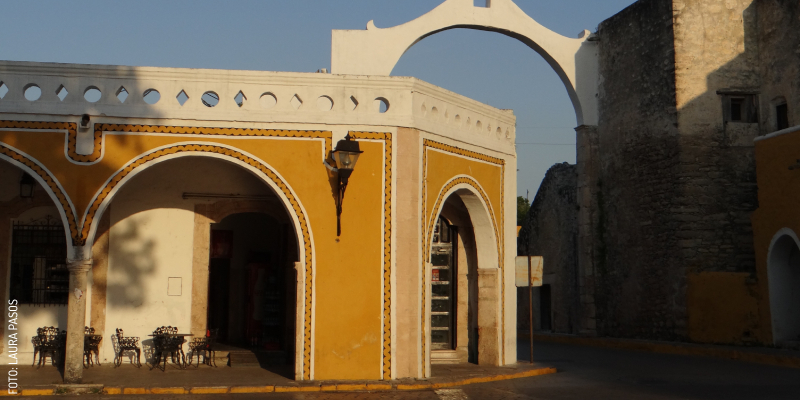
A stroll through the pyramids of Izamal
When you think of Izamal, the color yellow, the San Antonio de Padua convent, or the Kinich Kakmó archaeological site likely come to mind. However, the City of the Hills has much more to offer. Stick around to discover five lesser-known places to visit in Izamal that could add something special to your itinerary.
Izamal, the Yellow City of the Hills and the Three Cultures
 Izamal is known as the City of the Hills; it’s said that this is because the Maya constructions found in it were in such a state of abandonment that they appeared to be small hills. Even until recently, the people of Izamal continued to refer to the pyramids as “cerros” (hills).
Izamal is known as the City of the Hills; it’s said that this is because the Maya constructions found in it were in such a state of abandonment that they appeared to be small hills. Even until recently, the people of Izamal continued to refer to the pyramids as “cerros” (hills).
On the other hand, the coexistence of these Maya sites with colonial constructions (such as the convent of San Antonio de Padua) and, of course, the life of modern México, has also given it the nickname City of the Three Cultures.
Its third "nickname" is the Yellow City, and it's easy to understand why: the entire city is painted in this cheerful color. Various legends attempt to explain this, but the truth is that in Izamal, the façades of the houses have been yellow since the 1960s; the shade of yellow was standardized in 1993, coinciding with the visit of Pope John Paul II to the city.
![Habuk Izamal by Elena Murillo Piramide]() What makes Izamal special?
What makes Izamal special?
Izamal tells a story spanning over 2500 years of occupation. As a Maya city, it flourished during the Protoclassic period (150 - 250 AD) and experienced a decline in the early Postclassic period (1000 - 1200 AD), when Chichén Itzá gained more prominence. From its main square, four sacbés (pre-Hispanic causeways) extended in each cardinal direction; of these, only the ones connecting Izamal to the archaeological site of Aké (20 miles to the west) and Kantunil (13 miles to the south) still survive.
The city's importance and the monumentality of its structures led the Spanish to establish the San Antonio de Padua convent in Izamal, designating it as an "Indian village" (unlike cities such as Mérida and Motul, which were considered "Spanish towns"). The pyramids that survive to this day are part of the city, and therefore, they’re free to visit, and open every day from 8 am to 5 pm.
Zamná Square
Before you start your tour, Izamal's main square awaits you. Here, you'll breathe in a tranquil atmosphere and immerse your senses in the vibrant intensity of this Magical Town’s distinctive yellow color.
In addition to taking all the photos you want in front of the colorful letters spelling out "Izamal" or enjoying life and the view from the benches in the square (accompanied by some local snacks or ice cream), you can also stock up on crafts for yourself or your loved ones. You'll find hats, jewelry, traditional clothing, hammocks, crocheted items, and embroidered hair accessories, among many other things.
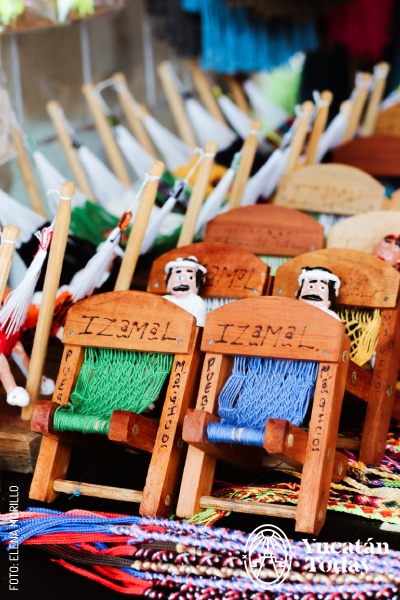
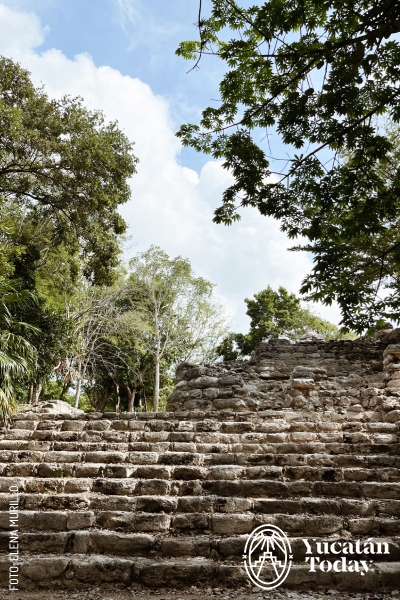
Archaeological Sites in Izamal
When it comes to archaeological sites in Izamal, everyone talks about Kinich Kakmó (and rightly so, as it is one of the largest in México). That's why, this time, we decided to go a different way and tell you a bit about four pyramids recently opened to the public: Habuk, El Conejo, Itzamatul, and Chaltun Ha.
Habuk
Located a short distance from downtown Izamal is the archaeological site of Habuk. While information about this place is scarce, its mystery beckons you to unleash your imagination, contemplating over a thousand possibilities. Just think: what could have happened there? Why was it built and for whom? Imagine how it might have looked before the effects of time took hold.
Despite this, visiting the site poses no problem, as it is public and free. Moreover, being uncrowded and peaceful, it is ideal for clearing your mind. The area is well kept, and without any issues, you can climb to the top (not that it's extremely high) of the structure. The visit won't take much time or physical effort, so you can fully enjoy it.
And if you're hungry when you leave, right across the street, you can buy something refreshing to drink or a Mexican snack. Everything sorted!
![Conejo Izamal by Elena Murillo]() El Conejo (T’u’ul)
El Conejo (T’u’ul)
If you don't have much time and want to make a quick visit, T’u’ul is what your itinerary needs. The archaeological site popularly known as "El Conejo" (The Rabbit) is located four blocks from the convent of San Antonio de Padua, a distance you can easily walk.
The pyramid, with a base of about 164 ft in front, 131 ft deep, and 13 ft high, welcomes you with a small yellow fence, a wide black gate, and the charming engraving of a rabbit taking care of a straw house. You can enter freely and climb up and down it quite easily. Just be careful with the rebellious dry branches as you walk. We don't want any accidents!
If you compare it with other structures in the area, it might seem small, but no less interesting. Perhaps you didn't know, but during excavation works, ancient objects of everyday life have been found, such as flint points, pottery shards, and ancient hoists (spindle counterweights) used for spinning thread.
So far, there isn't much precise information about the function of the Rabbit Pyramid; however, it is believed that it could have served as the base of a room for an important Maya dignitary.
Itzamatul
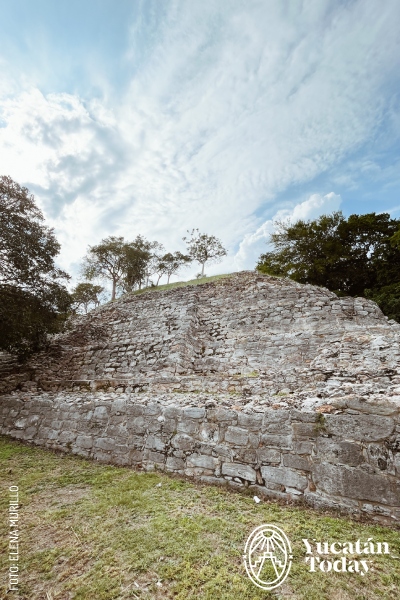 Third stop: Itzamatul. Just a few steps from Izamal’s Centro, on Calle 26, stands the impressive archaeological site of Itzamatul: the second-largest pyramid in the city, only after Kinich Kakmó (which is just a few blocks away!). Upon arrival, a black gate will lead you to the main entrance, all while giving you a good look at what awaits you: a construction dedicated to the Maya god Zamná, composed of three stages, each accompanied by fused vegetation.
Third stop: Itzamatul. Just a few steps from Izamal’s Centro, on Calle 26, stands the impressive archaeological site of Itzamatul: the second-largest pyramid in the city, only after Kinich Kakmó (which is just a few blocks away!). Upon arrival, a black gate will lead you to the main entrance, all while giving you a good look at what awaits you: a construction dedicated to the Maya god Zamná, composed of three stages, each accompanied by fused vegetation.
The first stage, built between 400 and 600 AD, consists of a stepped base on each side and a slight inclination, called Talud; it was in the construction of the second stage that rounded corners appeared, and vertical walls were erected, or at least that's how the informative plaque at the site explains it. Meanwhile, only the large base of over 328 ft on each side and the staircase on its side are preserved from the third stage, dating from 950 to 1150 AD.
The best part? You can climb to its summit and enjoy the view! It's not a climb that requires a lot of effort, but it's advisable to do it with shoes that won't add a layer of danger to the experience.
Chaltun Ha
Do you want to visit a place that makes you feel like you have it all to yourself? This is it! Almost on the outskirts of the city you’ll find Chaltun Ha (which in the Maya language means "water slabs" or "slabs with water") an archaeological site about which not much information is available. It comprises a pyramid in which three construction periods or phases can be identified.
"Almost on the outskirts of the city" is not an exaggeration. It's a 20-minute walk from downtown Izamal and just five minutes by car. The place doesn't have a designated parking lot, but there's enough space to comfortably park your vehicle.
On another note, it's worth mentioning: wear comfortable and preferably closed shoes. The entrance to the site is a dirt and stone path bordered by vegetation that freely claims its territory. Oh, and don’t forget: bring your insect repellent and thank us later.
If at the end of your tour, you're wondering "where shall we eat?" visit the municipal market or the restaurants Kinich or La Casona de Izamal. Just be prepared to wait, as the latter two are quite popular and, therefore, fill up quickly.
After all that's been said, it's fair to say that you are more than ready to plan your visit to Izamal. If you want, you can share the experience on our social media. Until next time!
Photography by Elena Murillo and Laura Pasos for its use in Yucatán Today.

Author: Elena Murillo
A Yucatecan storyteller of stories, events, and moments through words and images, naturally curious and constantly searching for spaces that make me feel and think.
Receive the latest articles and much more from the best of Yucatán in your email!
Related articles

Our Lady of Izamal, the Virgin of the Immaculate Conception
We invite you to visit Our Lady of Izamal, the Virgin of the Immaculate Conception, in the charming Pueblo Mágico of Izamal, Yucatán.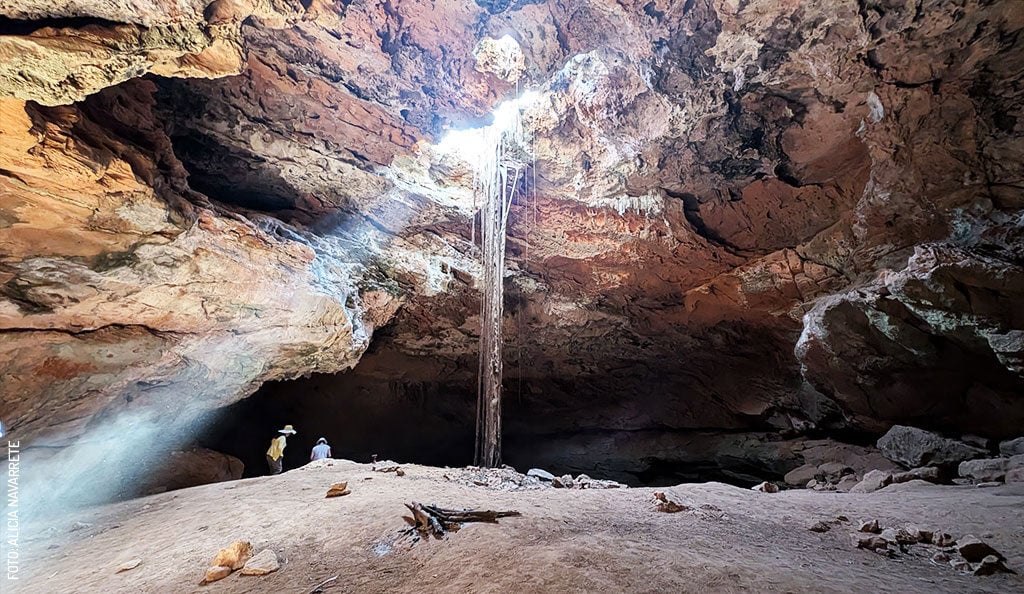
Tourism for Every Taste in Yucatán
Discover Yucatán: From sustainable ecotourism (Yokdzonot, Aldea Toktli) and underground adventure (Caves) to authentic culture (Maní, Xocén).